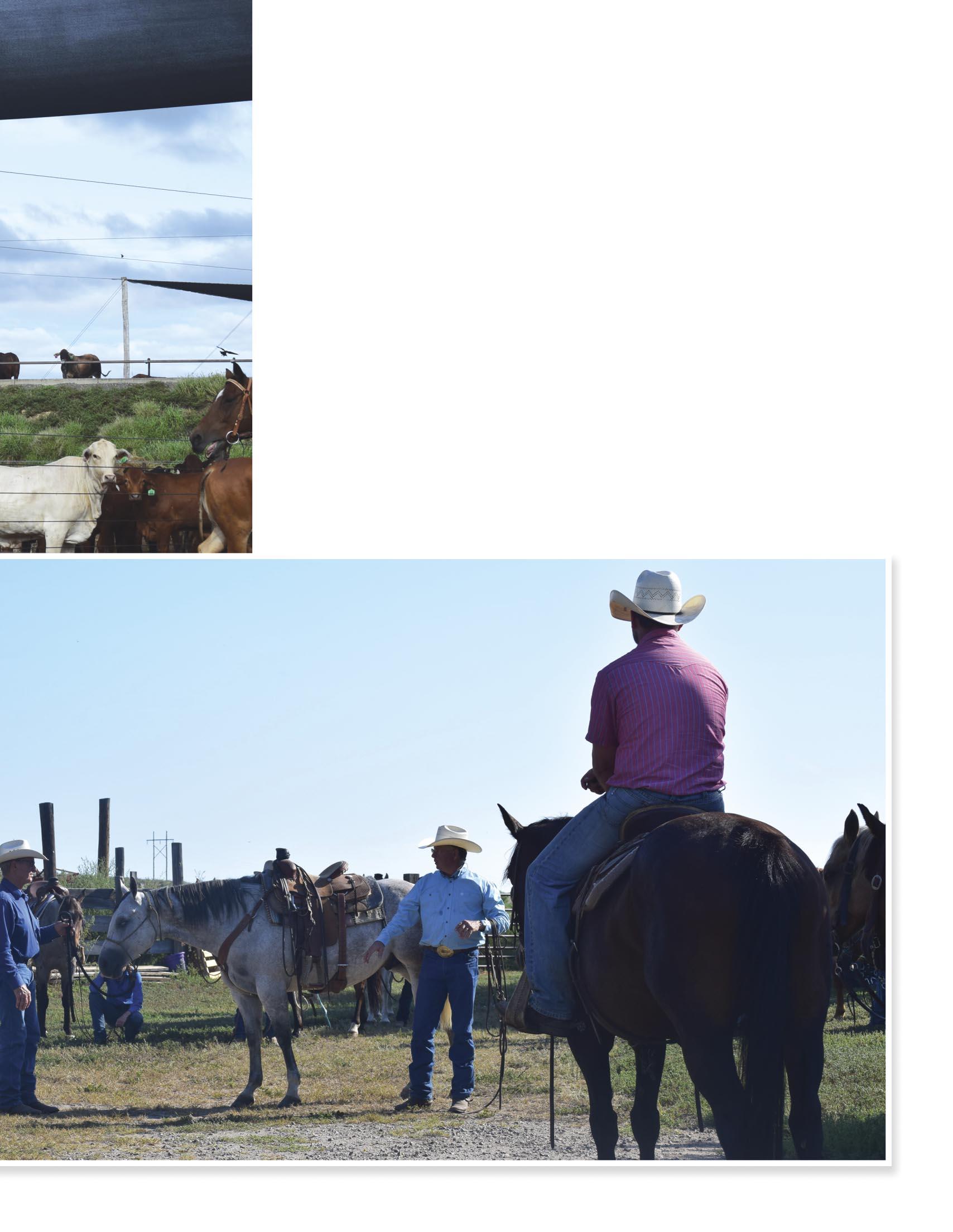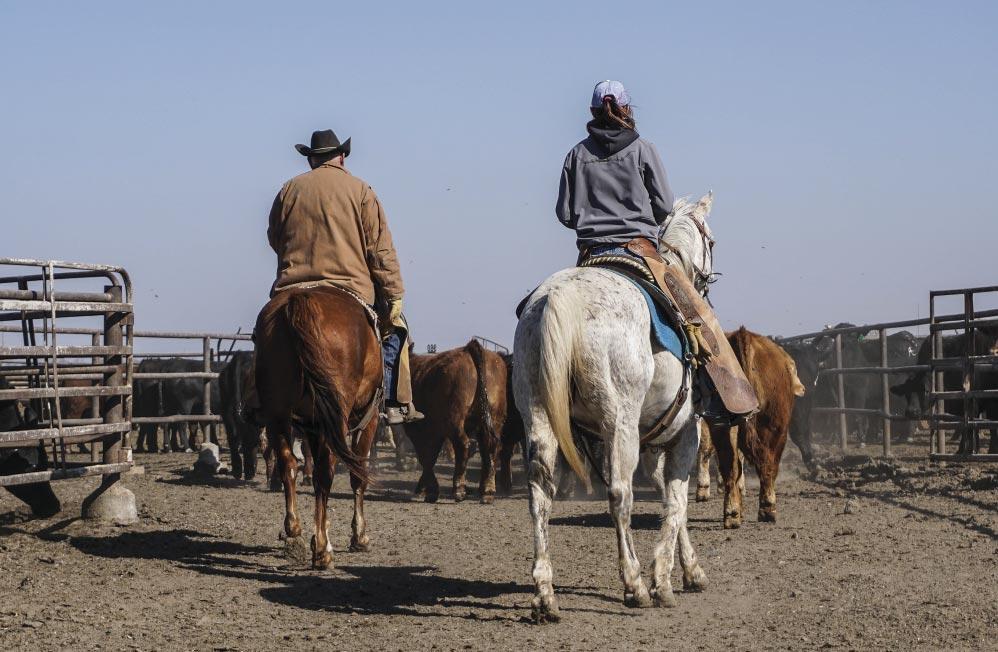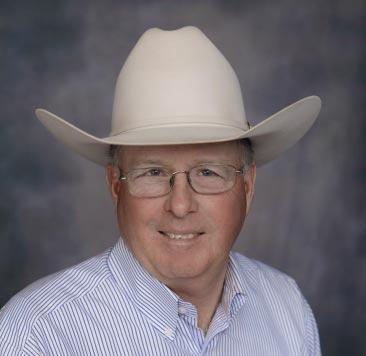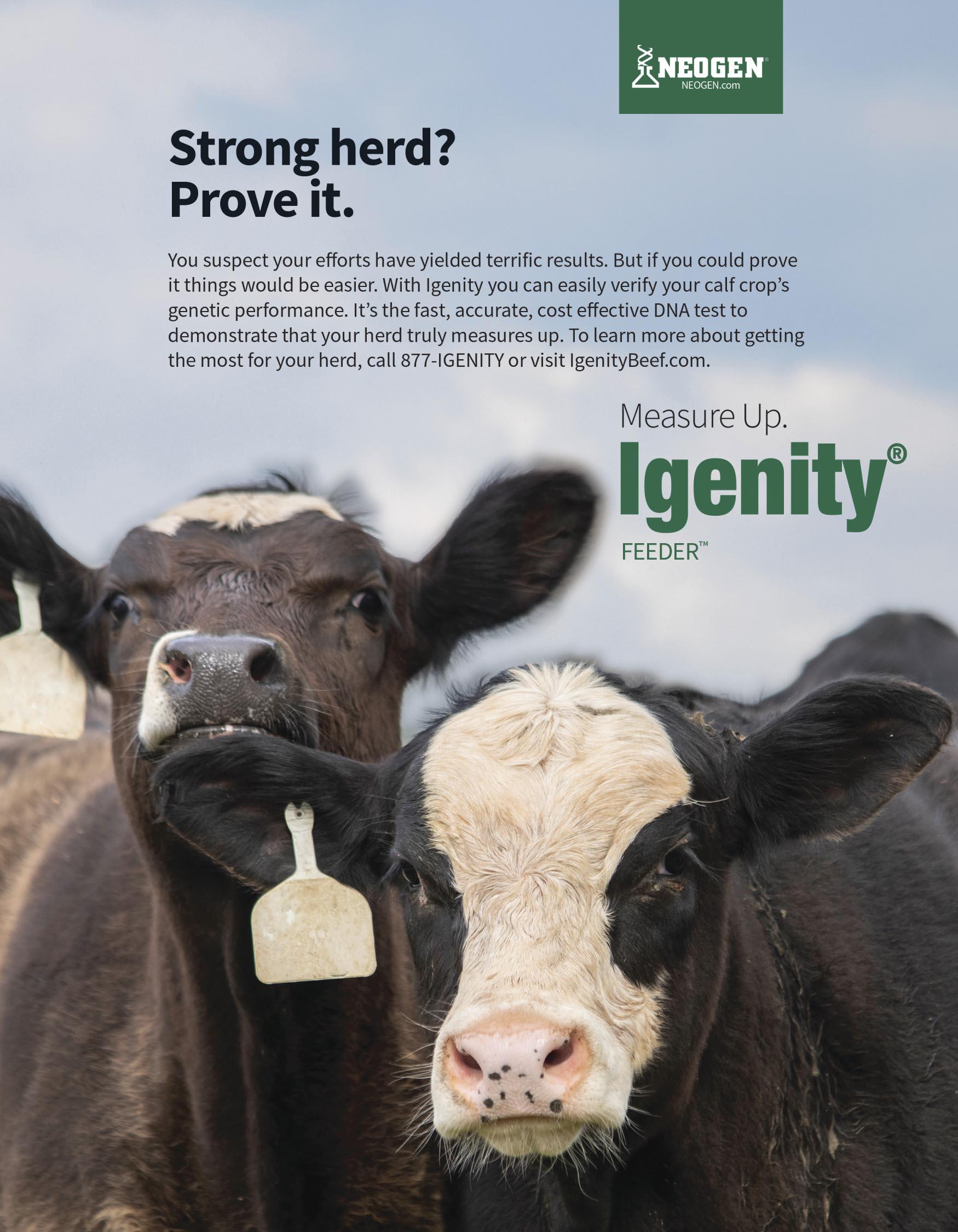
3 minute read
EVALUATING YOUR TACK
By Ted Howard, Ted Howard Stockmanship, Production Animal Consultation
Have you ever had a pair of boots pinch your feet or rub on your ankle bone? Poor fitting boots can make for a long, miserable day. We need to be as conscious of how our tack fits our horses so they do not have to suffer from ill-fitting equipment as well.
When I evaluate saddles, I consider good name brands. Newer saddles are built for our stouter-made horses of today. The older the saddle or the harder we ride them can cause the tree to spread which allows the saddle to drop down on a horse’s withers. This can create sores on their withers and shoulder blades. If you think your tree is broken, set your saddle on a hard surface and push down on both corners of the cantle. If your saddle gives, the tree is most likely broken. It is also important to keep your saddle clean and in good condition. I oil my saddles twice a year.
The withers on each horse are different. We have to be careful to get the right pads on each horse. High-withered horses need extra padding. Low-withered horses need less padding. Navajo blankets have a tendency to take hair off of the kidney area in the winter, however not in the summer months. I personally use a really good felt pad on my horses.
The best front cinch is mohair or a mohair blend. There is a little stretch to keep the horse more comfortable. A mohair cinch takes some maintenance to keep clean of debris that could rub your horse. A rubber cinch is easy to keep clean. However, we need to be careful when we start using a rubber cinch as they can irritate a horse’s hide.
I prefer leather latigos. Leather latigos have more give, which allows your horse’s ribs to open up so they can breathe easier, compared to a nylon latigo. Nylon has no give or stretch. If a horse turns short, the nylon will not allow his rib cage to expand. If your leather latigo starts to pull hard, treat it with baby powder. Never oil a leather latigo as it will gum up and not slide easily when cinching up.
However, we do oil our leather back cinch, hobble strap, and billet. The hobble strap needs to be in good repair as it keeps the back cinch from sliding up into the horse’s flank. The back cinch is designed to keep the saddle sitting flatter on the horse’s back. For example, when we lean over to open a gate, the back end of the saddle does not raise and cause the front end of the saddle to pinch our horse’s withers. In the morning, I do not cinch the back cinch snug until I have ridden a while. Once my horse is settled in, I cinch my back cinch so it is snug against my horse’s belly.

When considering a breast collar, I prefer a three-piece leather for fit. Keeping it oiled and adjusted correctly to fit my horse is important. The breast collar holds the saddle in place. It should lie above the points of the horse’s shoulders. The D-ring should be centered between the horse’s front legs so it does not rub the inside of either leg.
There are many different kinds of head gear for our horse. In the feedyard, a headstall with a full brow band and throat latch is safer as a horse cannot rub it off. The leather chin strap should only be snug enough to stick two fingers between the jaw and chin strap. The bit needs to be adjusted on a headstall to where there is barely a wrinkle at each corner of our horse’s mouth.
Remember, our horse is our partner and we want him as comfortable as he can be. If your tack fits correctly, your horse will not be sore or frustrated and your day will go smoother. Much like if your boots do not rub or pinch your feet!
Ted Howard’s life has always revolved around the horse. He holds a deep respect for the horse and has always made his living with one. Twelve years riding pens allowed him to recognize the importance of the horse in relationship to handling cattle. Ted has owned a horse shoeing and training business and currently owns and operates a cow/calf operation. Running cattle on grass and in stock fields allows him to use stockmanship principles in an environment different from the feedyard. In 2013, Ted was offered the opportunity to consult with Production Animal Consultation’s Animal Stewardship division. By specializing in horsemanship, Ted can help others utilize the horse to become better stockmen in the feedyard industry.
This article has been translated to Spanish on page 50.












